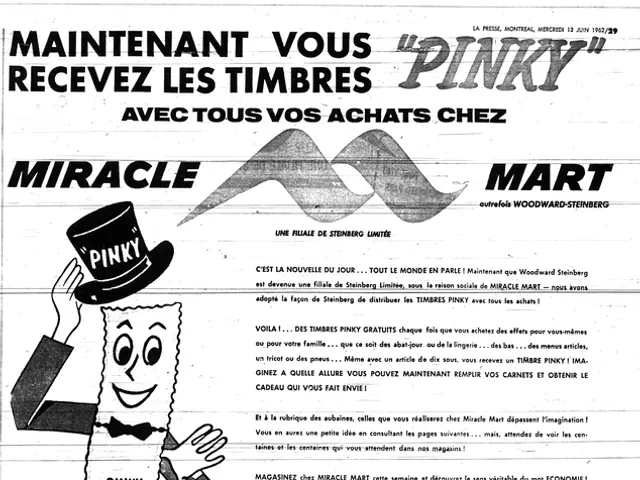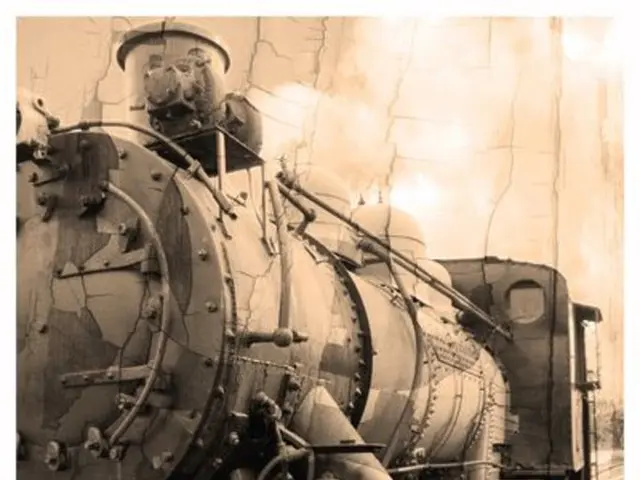The Transformation Journey of Record Tapes: From Analog to Digital
The Evolution of Magnetic Tape Recording: From Cassettes to Streaming
Magnetic tape recording technology has come a long way since its inception in the 1930s, revolutionizing the way we record and consume audio. From the unparalleled sound quality of reel-to-reel tapes to the resurgence of cassette tapes in recent times, the journey of magnetic tape is a fascinating one.
In the 1930s, German engineers like Fritz Pfleumer pioneered magnetic tape recording by developing magnetic coating on tape. Companies such as AEG and BASF produced the first reel-to-reel tape recorders in the late 1930s and early 1940s, offering superior audio fidelity compared to previous methods.
The 1950s saw magnetic tape gain wide use in professional audio and broadcasting. Half-inch wide magnetic tape became standard for data storage in computers with IBM’s 7-track format emerging in this decade.
The turning point came in 1963 when Philips introduced the compact cassette tape. This small, portable, and convenient format offered a much cleaner and clearer sound compared to vinyl records and led to mass adoption of cassette tapes for music distribution and personal use.
The late 1960s to 1970s marked the beginning of digital audio recording technologies. Heitaro Nakajima at NHK developed the first digital audio tape recorder in 1967, and Sony’s PCM-1 (1976) allowed digital audio recording on Betamax tapes.
The 1980s was the era of the cassette tape. Concurrently, specialized digital tape formats such as Sony’s Digital Audio Tape (DAT, introduced in 1987) offered higher quality digital recording on magnetic tape. Professional digital multitrack and mastering devices were also developed during this period.
The 1990s saw magnetic tape begin to decline in consumer music markets due to the rise of the compact disc (CD) and digital formats. Magnetic tape remained dominant for certain data storage needs, such as Linear Tape-Open and Digital Linear Tape formats for computer backups.
The 2000s onward marked the consumer shift from cassette tapes to digital formats, initially CD and later digital audio files (MP3 and streaming). Magnetic tape technology persisted mainly in data storage for servers and archival use, evolving with formats like Linear Tape-Open in the late 1990s and beyond.
In recent years, there has been a surprising resurgence of interest in the cassette tape. Driven by both nostalgia and the desire for a more tangible, physical music experience, cassette tapes have found a new audience. The Sony Walkman, released in 1979, played a pivotal role in solidifying the cassette tape's dominance in personal audio consumption during the 1980s.
Despite the cassette's popularity, there were some notable drawbacks, such as wear and tear of the magnetic tape leading to degradation in quality over time. By the early 1990s, compact discs had overtaken cassette tapes in terms of sales.
However, many audiophiles and collectors appreciate the warmth and character that cassette tapes bring to their listening experience, despite the inherent sound limitations. The 1980s also saw the advent of the compact disc (CD), a digital music format that offered a larger storage capacity, allowing for longer albums or additional tracks to be included on each disc. The CD's more robust build and the ability to skip directly to tracks without rewinding or fast-forwarding were huge advantages for consumers.
The 1990s and early 2000s saw the music industry undergo a monumental shift due to the digital revolution with the advent of MP3 technology. Streaming services like Spotify and Apple Music emerged in the late 2000s, further shifting the focus from physical media to cloud-based audio.
In conclusion, magnetic tape recording began with analog reel-to-reel tape in the 1930s, transformed consumer audio with the compact cassette in the 1960s, moved into digital tape technologies during the 1970s-80s, and declined as consumer music shifted to digital formats by the late 1990s and 2000s. Meanwhile, magnetic tape continues to serve modern computing and archival purposes in evolved forms.
Timeline and Major Milestones:
- 1930s-1940s: Invention of reel-to-reel magnetic tape
- 1950s: Half-inch tape for data storage (IBM)
- 1963: Philips invents the compact cassette
- Late 1960s-1970s: First digital audio tape recorders developed
- 1987: Introduction of Digital Audio Tape (DAT)
- 1990s: Digital Linear Tape (DLT), Linear Tape-Open
- 1990s-2000s: Decline of cassette tapes
- 2000s-present: Shift to digital audio files and streaming
Summary Table:
| Period | Milestone/Technology | Significance | |-----------------|----------------------------------------------|-------------------------------------------------| | 1930s-1940s | Invention of reel-to-reel magnetic tape | First magnetic tape audio recorders | | 1950s | Half-inch tape for data storage (IBM) | Tape applied to computer data storage | | 1963 | Philips invents the compact cassette | Portable, mass-market consumer audio medium | | Late 1960s-1970s | First digital audio tape recorders developed | Begin transition to digital audio recording | | 1987 | Introduction of Digital Audio Tape (DAT) | High-quality digital magnetic tape format | | 1990s | Digital Linear Tape (DLT), Linear Tape-Open | Tape storage for high-capacity data backup | | 1990s-2000s | Decline of cassette tapes | Rise of CD and digital audio formats | | 2000s-present | Shift to digital audio files and streaming | Magnetic tape remains mostly for archival storage |
- The resurgence of interest in cassette tapes in recent times represents a contemporary tech trend, signifying a growing appreciation for traditional gadgets and their unique qualities.
- Throughout the 1950s, technology companies, such as IBM, employed magnetic tape for data storage on their computers, showcasing the versatility of this technology within the expanding realm of technology.
- With the introduction of digital formats like MP3 and the emergence of streaming services, the entertainment industry underwent significant changes in the late 2000s, marking a shift away from physical media like cassette tapes, and emphasizing tech-driven solutions for music consumption.






